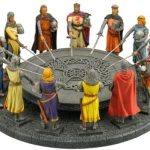#NFTs #tokens #money #tangible #assets #cryptocurrency #blockchain #metadata #security #risk
“NFTs are unique cryptographic tokens that exist on a blockchain and cannot be replicated” — Paul Ebeling
And NFTs can be used to represent real-world items like art, collectibles and real-estate. “Tokenizing” these real-world tangible assets allows them to be bought, sold, and traded more efficiently while reducing the probability of fraud. NFTs can also be used to represent individuals’ identities, property rights, and more.
Non-fungible tokens or NFTs are cryptographic assets on a blockchain with unique identification codes and metadata that distinguish them from each other. Unlike cryptocurrencies, they cannot be traded or exchanged at equivalency. This differs from fungible tokens like cryptocurrencies, which are identical to each other and can be used as a medium for commercial transactions.
The construction of each NFT has the potential for several use cases.
For example: NFTs are an ideal vehicle to digitally represent physical assets like real estate and artwork. Because they are based on blockchains, NFTs can also be used to remove intermediaries and connect artists with audiences or for identity management. NFTs can remove intermediaries, simplify transactions, and create new markets.
Much of the current market for NFTs is centered around collectibles, such as digital artwork, sports cards, and rarities.
Like physical money, cryptocurrencies are fungible i.e., they can be traded or exchanged, one for another.
For example: 1 Bitcoin is always equal in value to another Bitcoin. Similarly, a single unit of Ether is always equal to another unit. This fungibility characteristic makes cryptocurrencies suitable for use as a secure medium of transaction in the digital economy.
NFTs shift the crypto paradigm by making each token unique and irreplaceable, thereby making it impossible for one non-fungible token to be equal to another. They are digital representations of assets and have been likened to digital passports because each token contains a unique, non-transferable identity to distinguish it from other tokens. They are also extensible, meaning you can combine one NFT with another to “breed” a 3rd, unique NFT.
NFTs contain ownership details for easy identification and transfer between token holders. Owners can also add metadata or attributes pertaining to the asset in NFTs.
For example: Tokens representing coffee beans can be classified as fair trade. Or, artists can sign their digital artwork with their own signature in the metadata.
Non-fungible tokens are an evolution over the relatively simple concept of cryptocurrencies. Modern finance systems consist of sophisticated trading and loan systems for different asset types, ranging from real estate to lending contracts to artwork. By enabling digital representations of physical assets, NFTs are a step forward in the reinvention of this infrastructure.
The idea of digital representations of physical assets is not novel nor is the use of unique identification. However, when these concepts are combined with the benefits of a tamper-resistant blockchain of smart contracts, then they become a potent force for change.
The most obvious benefit of NFTs is market efficiency.
The conversion of a physical asset into a digital one streamlines processes and removes intermediaries. NFTs representing digital or physical artwork on a blockchain removes the need for agents and allows artists to connect directly with their audiences. They can also improve business processes.
For example: An NFT for a wine bottle will make it easier for different participants in a supply chain to interact with it and help track its provenance, production, and sale through the entire process. Consulting firm Ernst & Young has already developed such a solution for 1 of its clients.
Non-fungible tokens are also excellent for identity management.
Consider the case of physical passports that need to be produced at every entry and exit point. By converting individual passports into NFTs, each with its own unique identifying characteristics, it is possible to streamline the entry and exit processes for jurisdictions. Expanding this use case, NFTs can be used for identity management within the digital realm as well.
NFTs can also democratize investing by fractionalizing physical assets like real estate. It is much easier to divide a digital real estate asset among multiple owners than a physical 1.
That tokenization ethic need not be constrained to real estate; it can be extended to other assets, such as artwork and other collectables. Thus, a painting need not always have just 1 owner. Its digital equivalent can have multiple owners, each responsible for a fraction of the painting. Such arrangements could increase its worth and revenues.

Consider a piece of real estate parceled out into multiple divisions, each of which contains different characteristics and property types, where 1 division might be next to a beach while another is an entertainment complex and, yet another, is a residential district. Depending on its characteristics, each piece of land is unique, priced differently, and represented with an NFT. Real estate trading, a complex and bureaucratic affair, can be simplified by incorporating relevant metadata into each unique NFT. That is already happening.
Non-fungible tokens can digitally represent any asset.
The distributed nature of blockchains makes NFTs difficult, though not impossible to hack.
Have a healthy profitable weekend, Keep the Faith!









